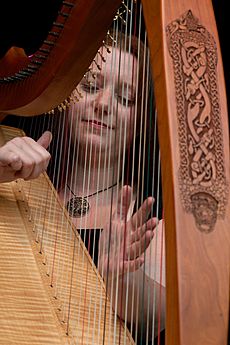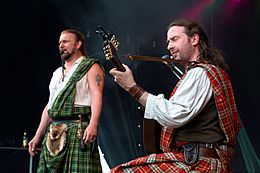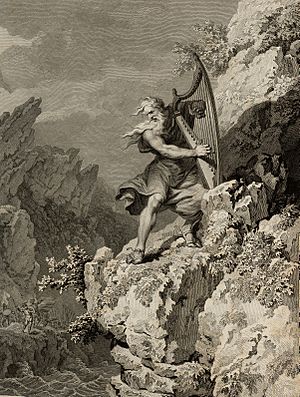Celtic music facts for kids
Celtic music is a big group of music styles. These styles grew from the traditional folk music of the Celtic people. The Celts lived in Western Europe a long time ago. Celtic music includes both old songs passed down by word of mouth and newer recorded music. The styles can be very different, from very traditional tunes to modern mixes called "Celtic fusion."
What is Celtic Music?
The term Celtic music usually means two main things. First, it is the music made by people who identify as Celts. Second, it refers to the special qualities found in the music of the Celtic Nations. Many famous Celtic musicians, like Alan Stivell and Paddy Moloney, believe that different Celtic music styles share a lot in common.
Here are some common things you might find in Celtic music:
- The main tune often moves up and down the basic chords. This means the melody follows the main musical notes of the song.
- This makes it easy to add melodic variation. Melodic variation means changing the tune slightly each time it's played. This is very common in Celtic music, especially with instruments like pipes and harps.
- It also helps musicians guess where the tune is going next. This makes it easier to add harmony, which is when different notes are played at the same time to sound good together.
Often, the name Celtic music is used for the music of Ireland and Scotland. This is because both countries have well-known music styles that are unique but also very similar. They have clearly influenced each other. Ireland's independence also helped promote "Celtic" music as a special Irish product. However, these are modern names for places. The people there share a common Celtic past and, because of that, a shared musical history.
Images for kids

See also
 In Spanish: Música celta para niños
In Spanish: Música celta para niños





